Abstract
The behaviour of blood lead (PbB) and of some indicators of effect (erythrocyte protoporphyrin IX (EP), delta-aminolaevulinic acid dehydratase activity of erythrocytes (ALAD), and urinary delta-aminolaevulinic acid (ALAU)) were studied in subjects who had ceased working with inorganic lead for at least one year. Relations between these indices and chelatable lead (PbU-EDTA (lead in urine after injection of CaNa2 EDTA 1 g intravenously)), a test that is used to evaluate the lead deposits in the body, were also analysed. As a comparison, a group of subjects currently exposed was studied. In the workers with past exposure the PbB values were significantly lower, at the same PbU-EDTA levels, than those found in subjects at work. The relation between EP and PbU-EDTA shows that, corresponding levels of chelatable lead, the values of the erythrocyte metabolite are identical in the two groups. Considering the EP-PbB relation, however, at the same PbB levels the protoporphyrin values appear distinctly more altered in the subjects with past exposure. Similar results were obtained from a study of the relations between ALAD and PbU-EDTA and between ALAD and PbB. The relation between ALAU and PbU-EDTA, however, shows that, at the same PbU-EDTA levels the urinary metabolic in past-exposed subjects is distinctly lower than in subjects at work, while the relation between ALAU and PbB shows that, for similar blood lead values, the ALAU levels are identical. On the basis of the results obtained it is concluded that in subjects with past exposure, EP and ALAD can be used in establishing the persistence and extent of an "active deposit" of lead in the organism, while PbB is of very limited use.
Full text
PDF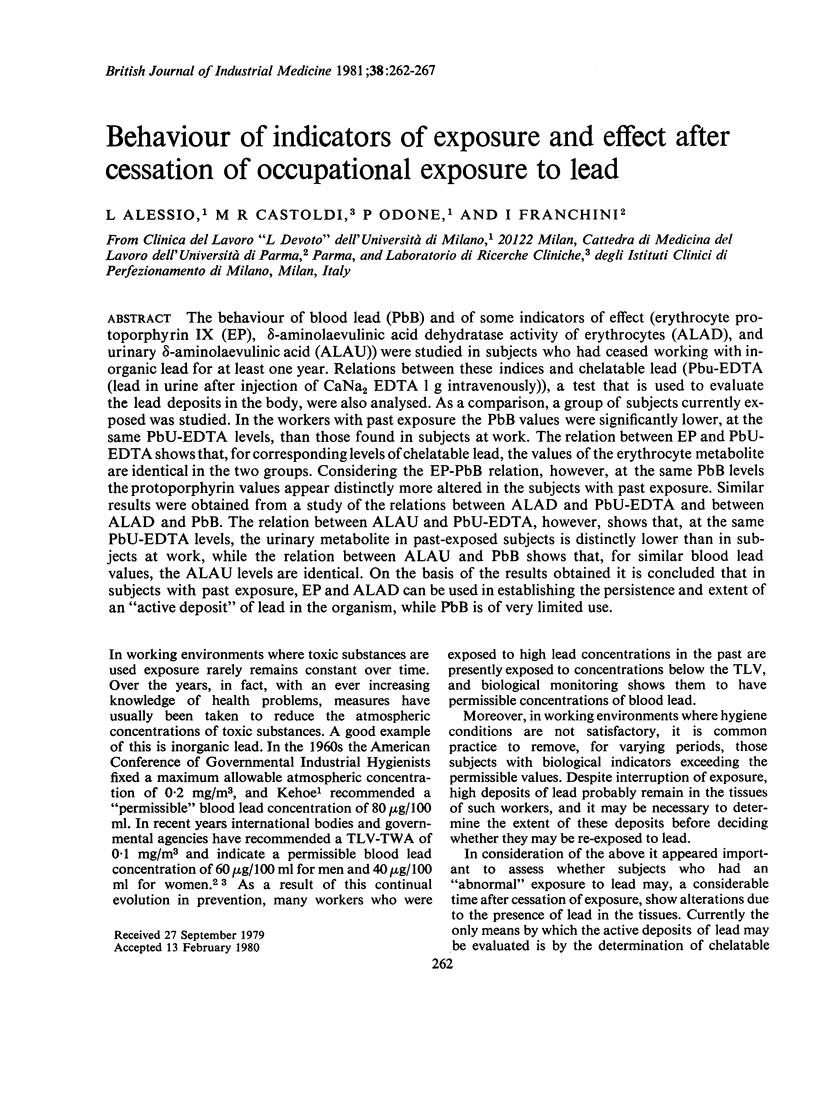
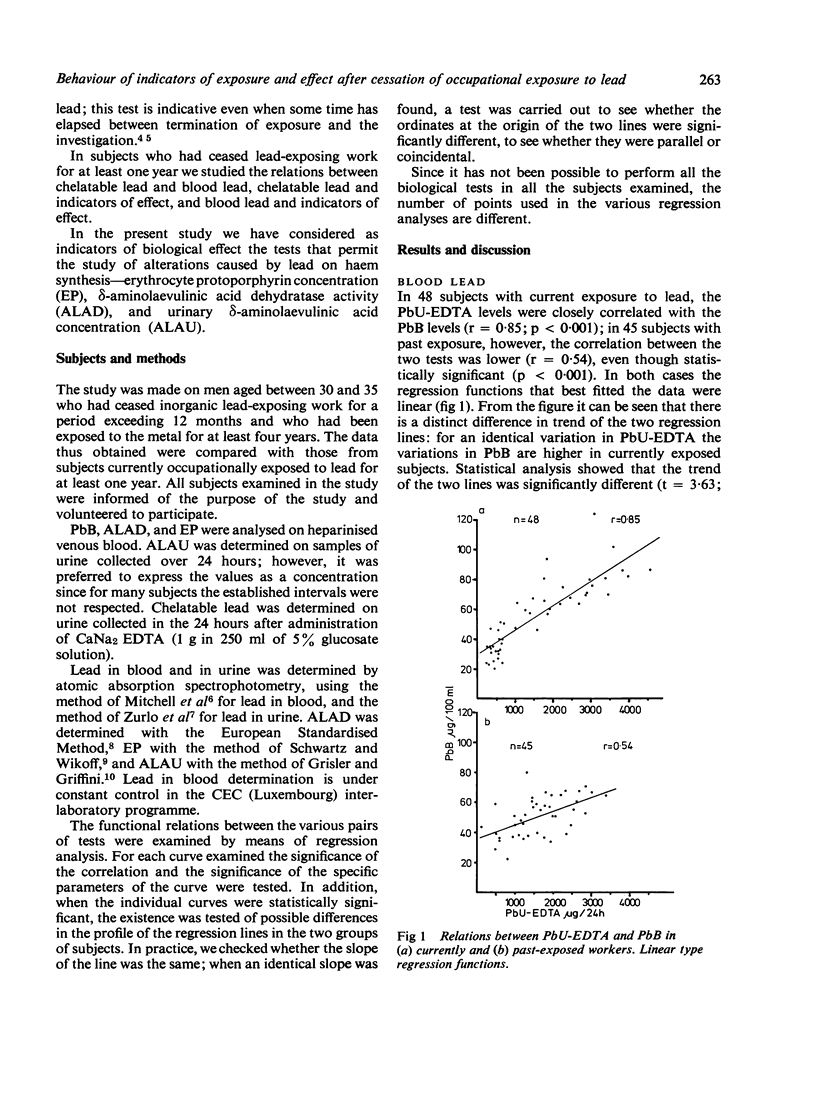
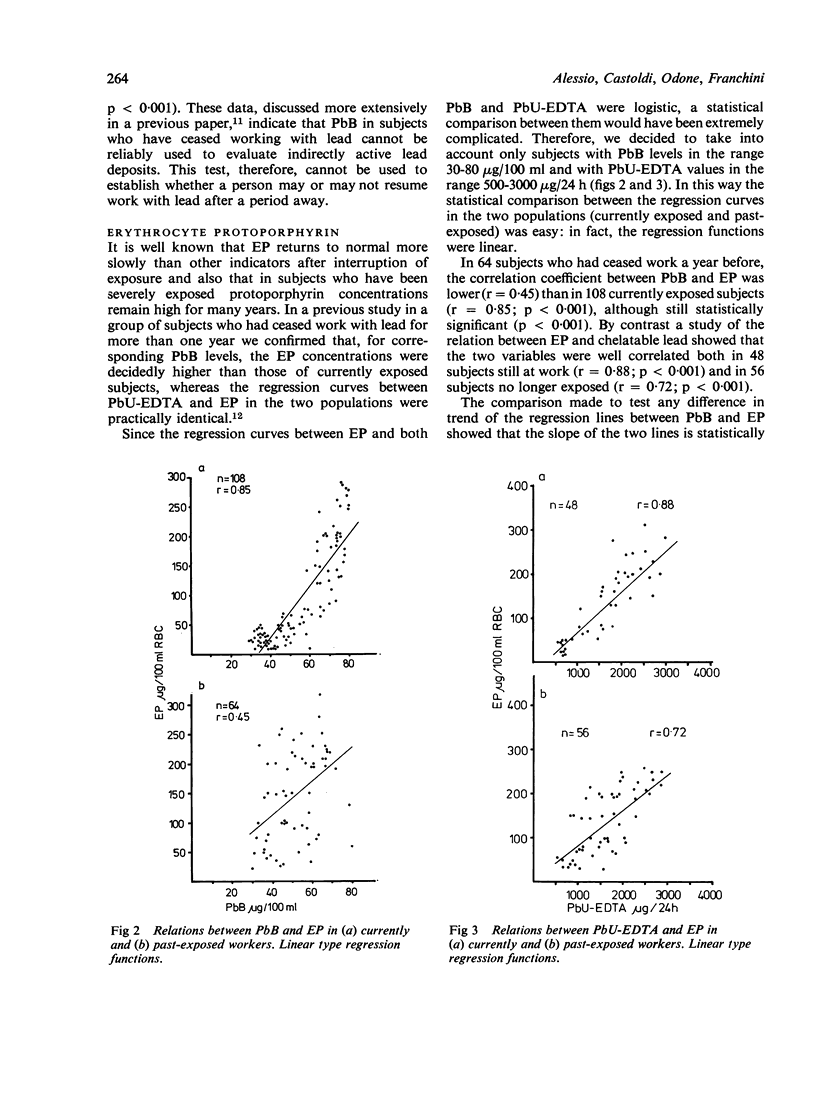
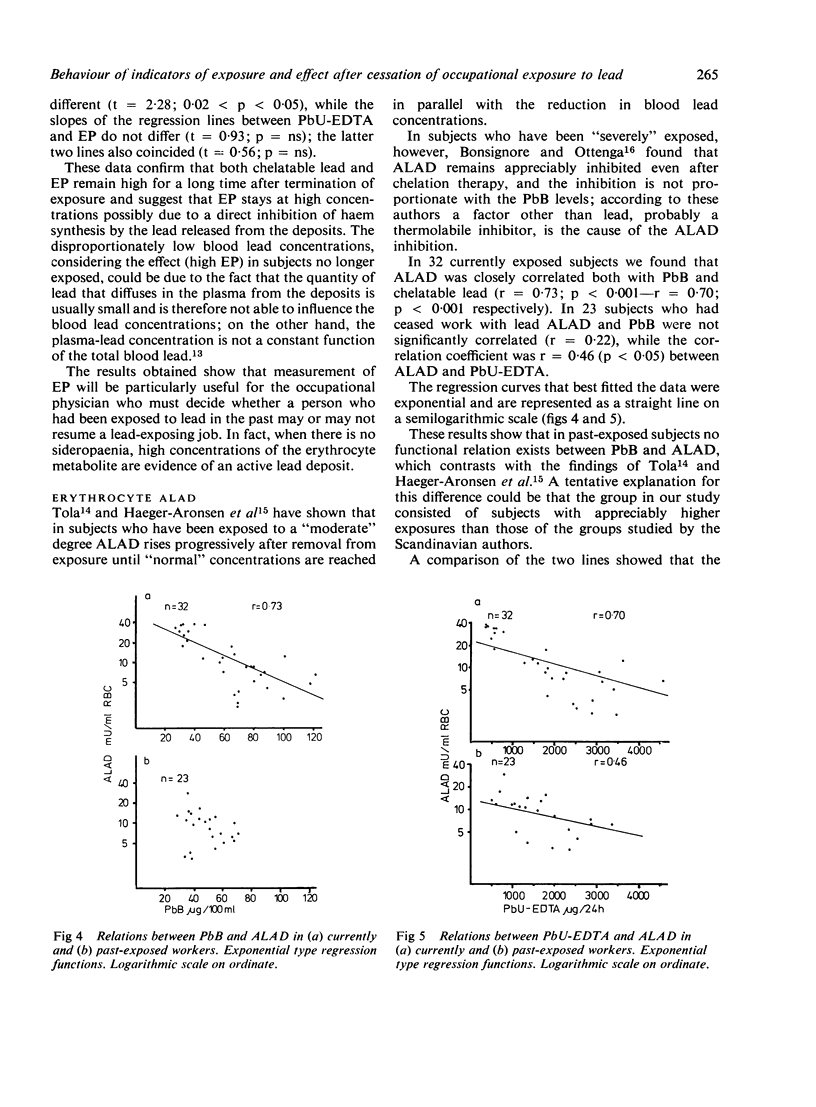
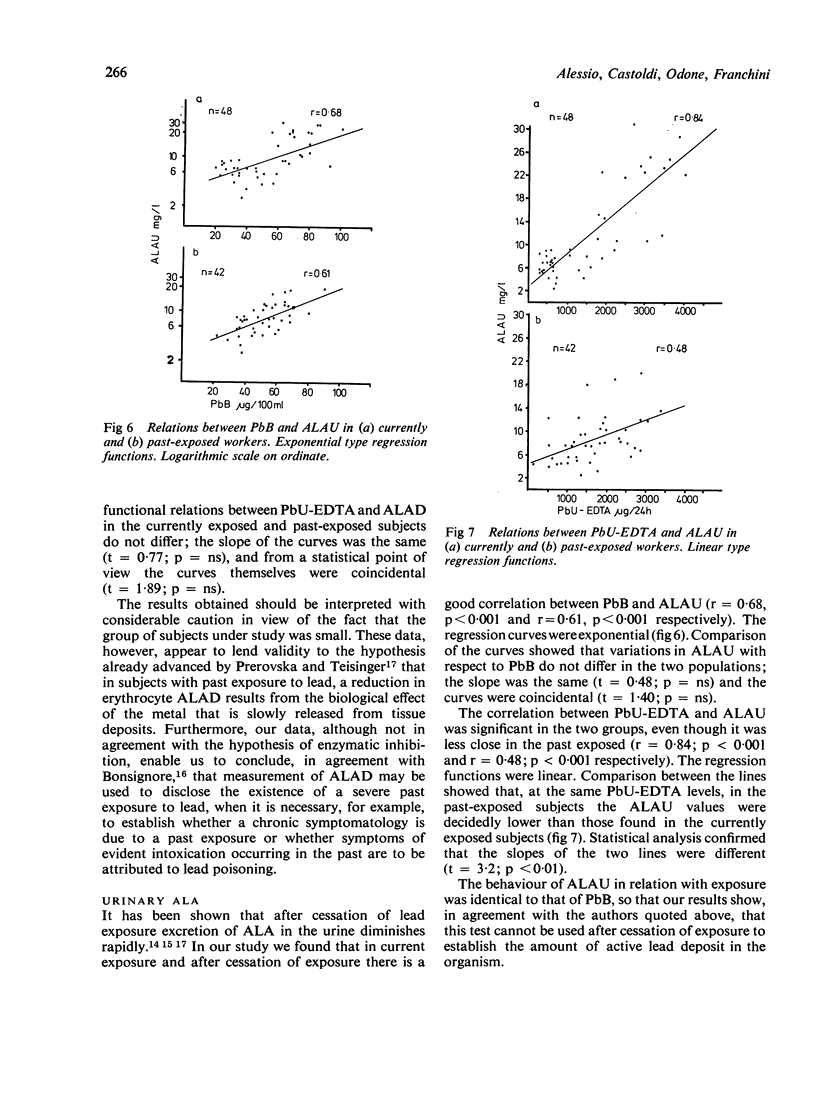
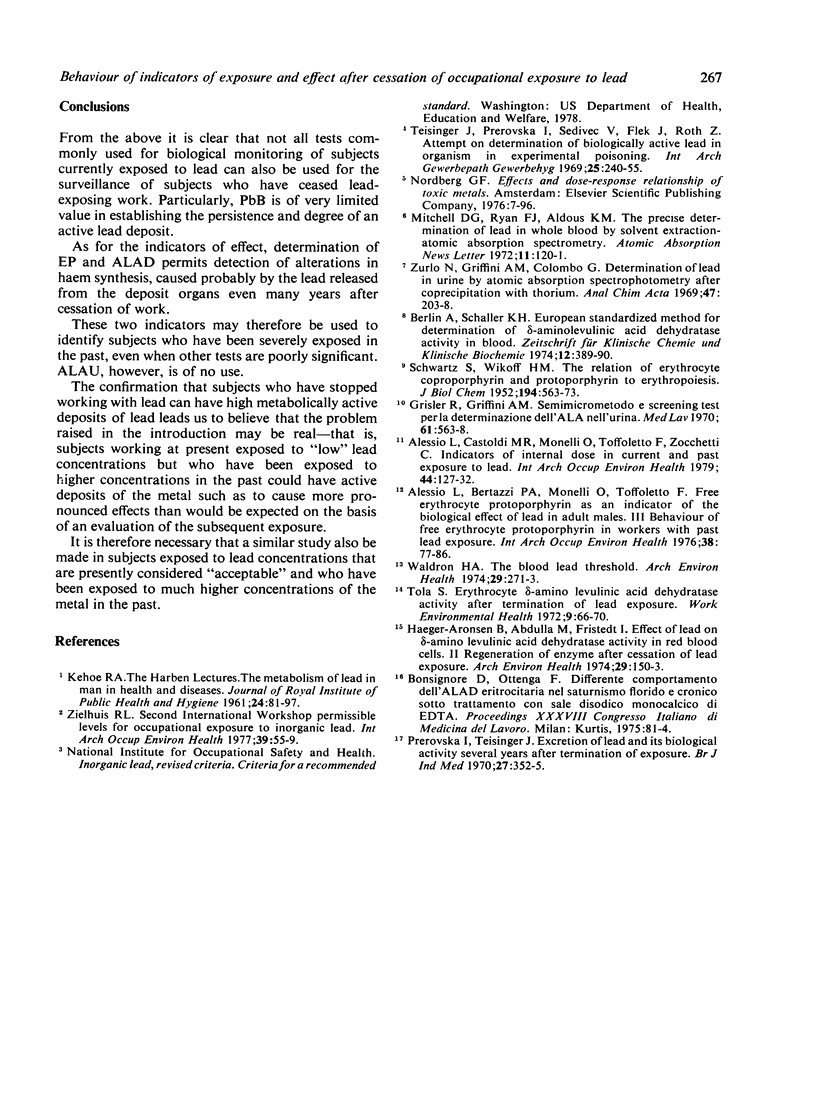
Selected References
These references are in PubMed. This may not be the complete list of references from this article.
- Alessio L., Bertazzi P. A., Monelli O., Toffoletto F. Free erythrocyte protoporphyrin as an indicator of the biological effect of lead in adult males. III. Behavior of free erythrocyte protoporphyrin in workers with past lead exposure. Int Arch Occup Environ Health. 1976 Dec 15;38(2):77–86. doi: 10.1007/BF00378618. [DOI] [PubMed] [Google Scholar]
- Alessio L., Castoldi M. R., Monelli O., Toffoletto F., Zocchetti C. Indicators of internal dose in current and past exposure to lead. Int Arch Occup Environ Health. 1979 Sep;44(2):127–132. doi: 10.1007/BF00386746. [DOI] [PubMed] [Google Scholar]
- Berlin A., Schaller K. H. European standardized method for the determination of delta-aminolevulinic acid dehydratase activity in blood. Z Klin Chem Klin Biochem. 1974 Aug;12(8):389–390. [PubMed] [Google Scholar]
- Grisler R., Griffini A. M. Semimicrometodo e screening test per la determinazione dell'ALA nell'orina. Med Lav. 1970 Nov;61(11):563–568. [PubMed] [Google Scholar]
- Haeger-Aronsen B., Abdulla M., Fristedt B. I. Effect of lead on delta-aminolevulinic acid dehydratase activity in red blood cells. II. Regeneration of enzyme after cessation of lead exposure. Arch Environ Health. 1974 Sep;29(3):150–153. doi: 10.1080/00039896.1974.10666553. [DOI] [PubMed] [Google Scholar]
- Prerovská I., Teisinger J. Excretion of lead and its biological activity several years after termination of exposure. Br J Ind Med. 1970 Oct;27(4):352–355. doi: 10.1136/oem.27.4.352. [DOI] [PMC free article] [PubMed] [Google Scholar]
- SCHWARTZ S., WIKOFF H. M. The relation of erythrocyte coproporphyrin and protoporphyrin to erythropoiesis. J Biol Chem. 1952 Feb;194(2):563–573. [PubMed] [Google Scholar]
- Teisinger J., Prerovská I., Sedivec V., Flek J., Roth Z. Attempt on determination of biologically active lead in organism in experimental poisoning. Int Arch Arbeitsmed. 1969;25(3):240–255. doi: 10.1007/BF00678314. [DOI] [PubMed] [Google Scholar]
- Waldron H. A. The blood lead threshold. Arch Environ Health. 1974 Nov;29(5):271–273. doi: 10.1080/00039896.1974.10666586. [DOI] [PubMed] [Google Scholar]


